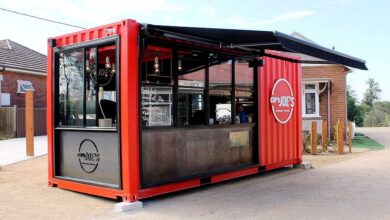Botswana Businesses Relaunches: The Ultimate Hub for Entrepreneurs and Business Leaders

Botswana Businesses, the leading digital business magazine in Botswana, proudly announces its official relaunch, unveiling a revamped platform that continues to empower entrepreneurs, business leaders, and dreamers across the country. Operated by Nine80 Digital Media, a trailblazer in creating educational and inspiring content across Africa, Botswana Businesses reaffirms its commitment to equipping professionals with the resources they need to succeed in today’s dynamic economy.
Launched in 2019, Botswana Businesses has grown into a trusted resource for insightful content, actionable advice, and the latest business news. The platform’s relaunch introduces enhanced features, a modernized user experience, and expanded content offerings, making it the go-to destination for anyone looking to start, fund, or grow their business in Botswana.
Explore the upgraded website at https://botswanabusinesses.com/.
A Platform Designed for Every Stage of Business Growth
Botswana Businesses’ refreshed approach focuses on six key areas designed to cater to entrepreneurs at every stage of their journey:
• Start: Offering expert guidance on building a strong foundation for new ventures, from ideation to execution.
• Fund: Providing insights into securing funding, managing finances, and accessing capital for sustainable business growth.
• Grow: Sharing proven strategies, tips, and tools to scale businesses and achieve market expansion goals.
• Lifestyle: Helping entrepreneurs achieve work-life balance with wellness tips, productivity hacks, and personal growth advice.
• Business Lists: Curating inspiring lists of Botswana’s leading businesses, rising stars, and innovators.
• Business News: Delivering up-to-date developments, trends, and opportunities shaping Botswana’s business landscape.
“Our goal is to inspire and support Botswana’s entrepreneurial ecosystem,” said a spokesperson for Botswana Businesses. “Whether you’re just starting out or an experienced business leader, our platform offers resources tailored to the unique challenges and opportunities of doing business in Botswana.”
Why Botswana Businesses Stands Out
The publication distinguishes itself through its deep understanding of Botswana’s economic environment and the needs of its entrepreneurs. As a Botswana-focused business magazine, it prioritizes content that resonates with local business owners while delivering globally relevant insights.
Botswana Businesses is more than just a magazine—it’s a community. It fosters connections among doers, innovators, and leaders who are shaping the future of Botswana’s economy.
Join the Movement
With a vision to be the leading source of inspiration and knowledge for Botswana’s entrepreneurial ecosystem, Botswana Businesses invites everyone to be part of this exciting journey.
Visitors to the newly relaunched platform can expect fresh insights, practical tools, and powerful stories designed to turn business dreams into reality. From startup founders to seasoned executives, Botswana Businesses is here to support, inspire, and connect.
Stay connected. Stay inspired. Stay successful.
Visit https://botswanabusinesses.com/ to explore the revamped platform and take the next step in your entrepreneurial journey.




